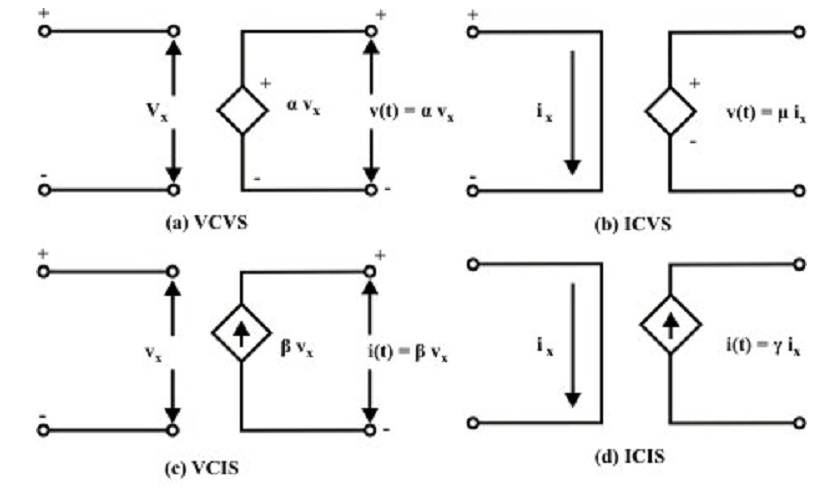Independent and Dependent Sources which encountered in electric circuits
Independent Sources:
The current and voltage sources (whether practical or ideal) are termed as independent sources and such sources play a significant role to drive the circuit in order to execute a particular job. The internal values of such sources (i.e., either voltage source or current source) – that is, the generated voltage VS or generated current IS are not affected by the load associated across the source terminals or across any other element which exists elsewhere in the circuit or exterior to the source.
Dependent Sources:
The other class of electrical sources is exemplified by dependent source or controlled source. However the source voltage or current depends on a voltage across or a current via some other element somewhere else in the circuit. Sources, that exhibit this dependency, are termed as dependent sources. Both voltage and current kinds of sources might be dependent, and either might be controlled by a voltage or a current. In common, dependent source is symbolized by a diamond (◊ )-shaped symbol as not to puzzle it with an independent source. One can categorize dependent voltage and current sources into four kinds of sources as shown in figure below. These are listed below as follows:
(a) Voltage-controlled voltage source (VCVS)
(b) Current-controlled voltage source (ICVS)
(c) Voltage-controlled current source (VCIS)
(d) Current-controlled current source (ICIS)

Figure: Ideal dependent (controlled) sources
Note:
Whenever the value of the source (i.e., either voltage or current) is controlled by a voltage (Vx) anywhere else in the circuit, the source is supposed to be voltage-controlled source. On the other hand, whenever the value of the source (i.e., either voltage or current) is controlled by a current (ix) somewhere else in the circuit, the source is supposed to be current-controlled source. The KVL and KCL laws can be exerted to networks having such dependent sources. The source conversions, from dependent voltage source model to dependent current source model, or vice-versa, can be used as required to simplify the network. One might come across with the dependent sources in most of the equivalent-circuit models of electronic devices (such as transistor, BJT (bipolar junction transistor), FET (field-effect transistor) and so on) and transducers.